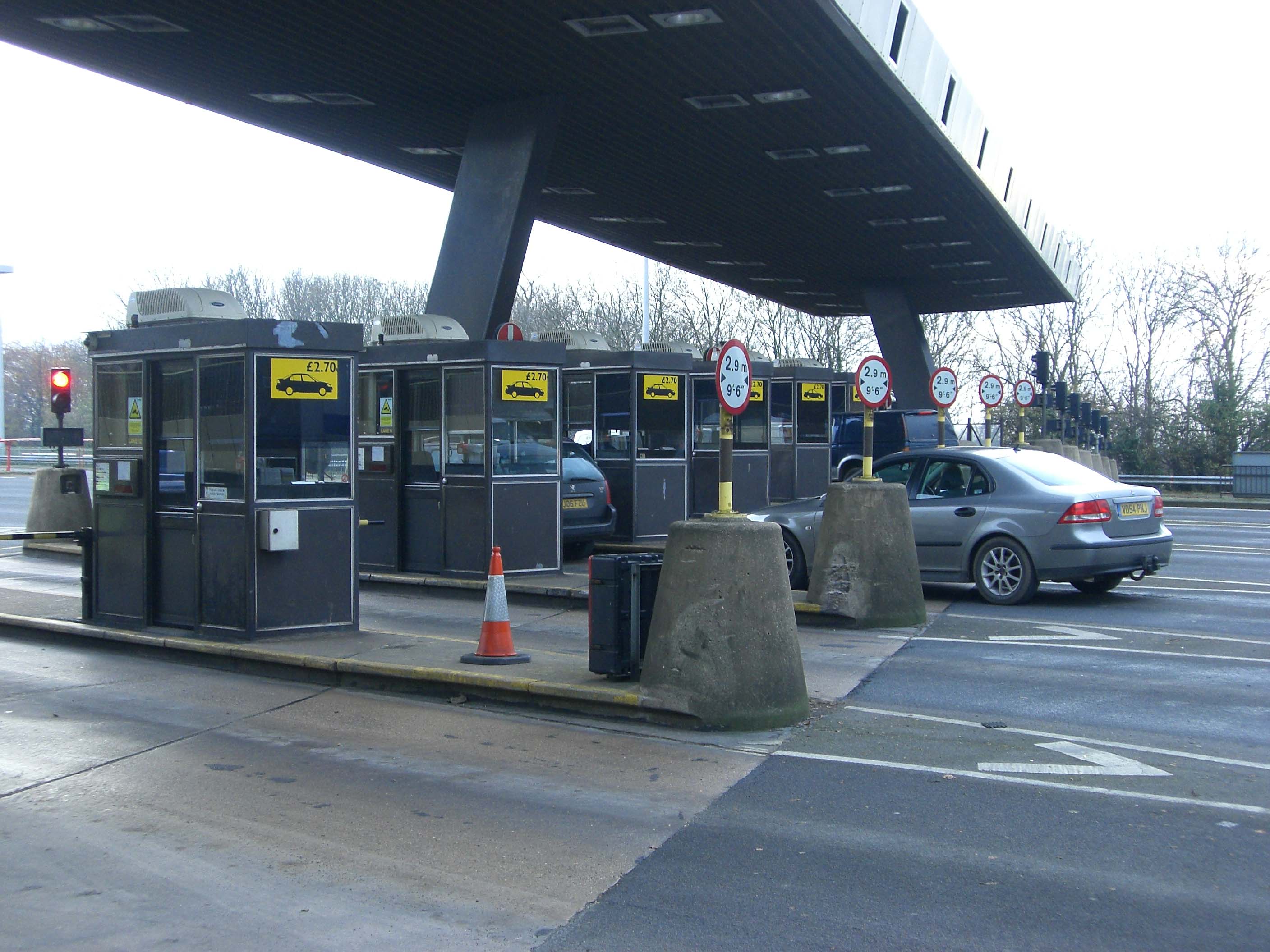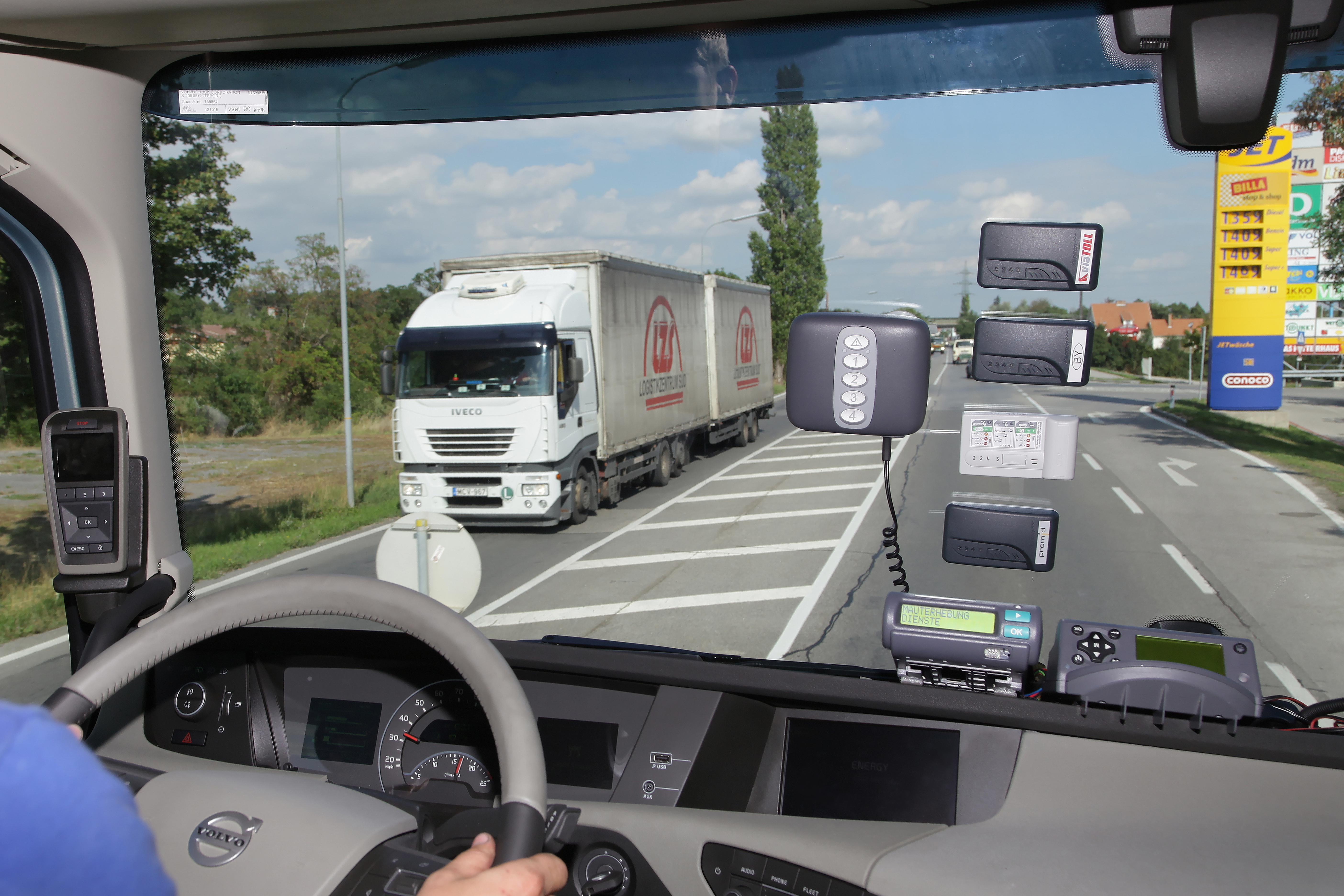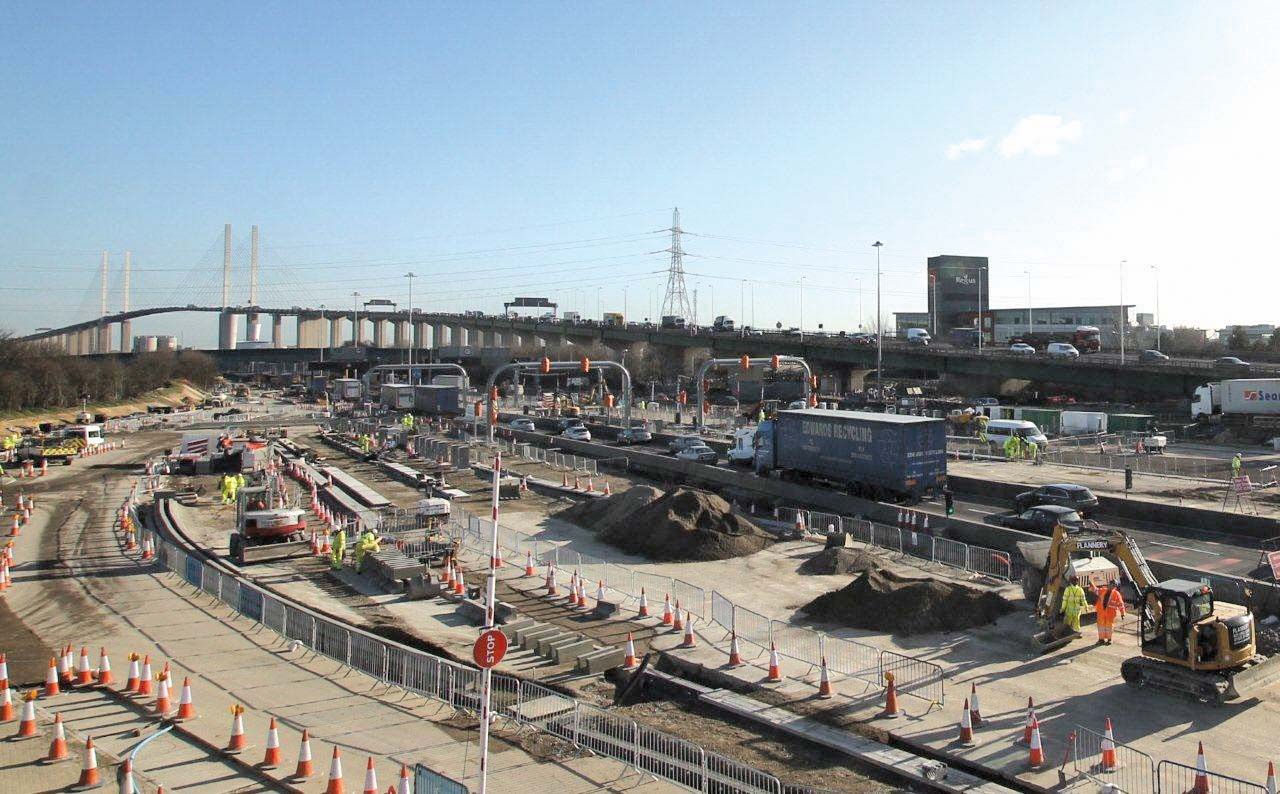Being the first organisation attempting to implement an interoperable system poses challenges and increases risk that must be managed to realise the benefits. The European Electronic Toll Service (EETS) legislation aims to avoid the problems experienced in the USA and provide road users with seamless travel across the EU but it can pose big problems for some toll operators. Take, for instance, the case of the Humber Bridge in the UK. Its case was highlighted at the recent ITS World Congress by Tim Gammons,

The current cash and voucher payment options will remain when the new plaza is built
Being the first organisation attempting to implement an interoperable system poses challenges and increases risk that must be managed to realise the benefits.
The European Electronic Toll Service (EETS) legislation aims to avoid the problems experienced in the USA and provide road users with seamless travel across the EU but it can pose big problems for some toll operators. Take, for instance, the case of the Humber Bridge in the UK. Its case was highlighted at the recent6456 ITS World Congress by Tim Gammons, director of engineering consultant Arup which is working with the Humber Bridge Board on plans to upgrade the route to open-road tolling.
The Humber Bridge opened in 1981 and the current toll collection hardware and support systems are a (1998) evolution of the original installation and are in need of replacement. In examining the options for replacement, the bridge authorities decided to enhance the service provided to the 6.5 million vehicles per year that use the bridge by adding an open-road tolling element while also improving the existing cash and voucher payment systems. In meeting its programme, the Humber Bridge will chalk up a double first for the UK: the first open-road tolling system and the first to be capable of supporting the EETS legislation (Directive 2004/52/EC and Decision 2009/750/EC).
“While the interoperability in a tolling/charging systems and a ‘One Device – One Contract – One Invoice’ concept envisaged by EETS is good for long-distance road users, it can pose additional problems for isolated toll operations, such as the Humber Bridge” Gammons told1846 ITS International. “EETS is designed for pan-European travel and although a significant operation and important regional route, the Humber Bridge is not on a heavily trafficked route,” he adds.
The bridge runs north/south across the Humber, effectively connecting the major ports of Hull and Immingham/Grimsby. Vehicles using the main UK motorway network to travel to or from these ports do so via parallel east/west motorways - so there is no need for strategic traffic to cross the bridge. More than 85% of motorists using the bridge are local residents who use the crossing on a regular basis.
“Even with only three of the six available lanes open there are usually no long queues at the toll booths and local users are accustomed to either buying readily-available pre-pay vouchers or paying cash and interacting with the bridge staff,” says Gammons.
In addition, as the Humber Bridge will be the UK’s first open-road toll system there are other practical considerations such as who it needs be interoperable with, who determines how interoperability is implemented and the establishment of contractual relationships across institutional boundaries. Then there is the question of who pays for implementation and additional costs incurred by early adopters. Potentially even more problematic is the potential for early adopters to be left with an obsolete system if a number of subsequent tolling companies adopt a different non-compatible system. Finally, toll operators (and early adopters in particular) have to consider what liabilities they might have to take on.
Until 2015 there will be no other UK toll operations to be interoperable with, and so there are a number of technical, procedural and contractual challenges which exposes the UK’s first interoperable toll operation to unknown costs and risks.
Gammons says: “Many of these issues can be more easily addressed in larger operations or where there are adjacent toll operators so the collective benefits of collaboration will be more readily realised. Equally it is useful for traffic routes with a good proportion of international or cross border users, but for the likes of the Humber Bridge it can add layers of complication, cost and potential business risk to benefit a tiny proportion of users.
“While the roadside DSRC interoperability requirements are well understood, without a detailed translation into a national EETS Regulatory Framework policy, there is a lack of clarity as to the precise nature of operational interoperability that the Humber Bridge Board should be working towards,” he adds.
This presents the Humber Bridge and other similar schemes with a dilemma: should it pursue full EETS compliance on the basis of the available information and try to future-proof the solution or postpone full compliance until all technical and operational details are agreed?
Both options run the risk of incurring additional cost, however in the latter case there would be a certainty of extra costs associated with making changes at a future date to an already implemented toll system. And even if the new system is deemed EETS-compliant at the outset, without a national EETS Regulatory Framework policy, there is no guarantee that it will remain so in the future.
Gammons says: “The potential is that the first toll operation becomes a pilot and develops the standards or guidelines for future interoperable toll schemes at its own cost. And there remains a downstream risk of further costs in trying to make today’s design decisions compliant in the future.”
Nevertheless the Humber Bridge Board considers that interoperability should be embraced provided the costs of implementation and operation can be justified. It has developed a strategy for future interoperability which minimises the immediately implemented roadside infrastructure. A flexible and scalable back-office solution has been designed to allow simple enhancement for interoperability and there will be a resilient fall-back strategy if the national policy framework not be available in a suitable timescale.
At the project level this has been translated into a ‘hybrid’ toll system solution using two open-road toll lanes in each direction with adjacent staffed manual/ETC lanes. The move to open-road tolling will see a threefold increase in the current 500 vehicles/hour theoretical lane throughput capacity.
Physical reconstruction of the tolling booths is currently underway and the implementation of the new tolling system will be done in four phases. Initially there will be a low level of manual interoperability through cash and tag facilities in the replacement manual/ETC bypass lanes. The second phase will see open-road tolled lanes operating in parallel with the manual/ETC bypass lanes. Combining this with a flexible and scalable tolling approach of both open-road and manual/ETC lanes both maintain a strong customer focus and takes advantage of a planned transition. The pace at which the open-road capacity is expanded, will depend on the pace of take-up of in-vehicle devices.
A third phase will see the implementation of an open ETC architecture system as the foundation for future interoperability and EETS. At the same time, a route to interoperability will be established with interested parties and industry. In the final phase, and at the appropriate time, all the interested parties will move to interoperable operation through limited system enhancement.
Gammons says the approach eases commissioning and staged migration by maintaining manual/ETC lanes while enabling a corresponding increase of open-road lanes as tag penetration increases. The modular design of the booths allows future EETS compliance at both manual and open-road lanes. Furthermore, throughout the project implementation it provides resilience in both revenue protection and maintenance of the tolled crossing.
With construction now underway, the Humber Bridge Board is liaising with interested parties in the UK and Europe to understand the realisable requirements for interoperability. One option being considered for establishing early interoperability principles could be through using a third party facilitation arrangement to minimise both the risk and the capital cost.
Across in Ireland
Perhaps one of the best comparisons is the East Link Bridge in Dublin which crosses the River Liffey which also carries a large proportion of local traffic and is equipped with both manual cash/card collection and open-road tolling. Here the authorities estimate than more than half of the motorists pay by cash. There are, however, other tolled motorways in the region such as the M3 and M4 where the figures remain split almost exactly 50/50 between tags and cash payments.
The European Electronic Toll Service (EETS) legislation aims to avoid the problems experienced in the USA and provide road users with seamless travel across the EU but it can pose big problems for some toll operators. Take, for instance, the case of the Humber Bridge in the UK. Its case was highlighted at the recent
The Humber Bridge opened in 1981 and the current toll collection hardware and support systems are a (1998) evolution of the original installation and are in need of replacement. In examining the options for replacement, the bridge authorities decided to enhance the service provided to the 6.5 million vehicles per year that use the bridge by adding an open-road tolling element while also improving the existing cash and voucher payment systems. In meeting its programme, the Humber Bridge will chalk up a double first for the UK: the first open-road tolling system and the first to be capable of supporting the EETS legislation (Directive 2004/52/EC and Decision 2009/750/EC).
“While the interoperability in a tolling/charging systems and a ‘One Device – One Contract – One Invoice’ concept envisaged by EETS is good for long-distance road users, it can pose additional problems for isolated toll operations, such as the Humber Bridge” Gammons told
The bridge runs north/south across the Humber, effectively connecting the major ports of Hull and Immingham/Grimsby. Vehicles using the main UK motorway network to travel to or from these ports do so via parallel east/west motorways - so there is no need for strategic traffic to cross the bridge. More than 85% of motorists using the bridge are local residents who use the crossing on a regular basis.
“Even with only three of the six available lanes open there are usually no long queues at the toll booths and local users are accustomed to either buying readily-available pre-pay vouchers or paying cash and interacting with the bridge staff,” says Gammons.
In addition, as the Humber Bridge will be the UK’s first open-road toll system there are other practical considerations such as who it needs be interoperable with, who determines how interoperability is implemented and the establishment of contractual relationships across institutional boundaries. Then there is the question of who pays for implementation and additional costs incurred by early adopters. Potentially even more problematic is the potential for early adopters to be left with an obsolete system if a number of subsequent tolling companies adopt a different non-compatible system. Finally, toll operators (and early adopters in particular) have to consider what liabilities they might have to take on.
Until 2015 there will be no other UK toll operations to be interoperable with, and so there are a number of technical, procedural and contractual challenges which exposes the UK’s first interoperable toll operation to unknown costs and risks.
Gammons says: “Many of these issues can be more easily addressed in larger operations or where there are adjacent toll operators so the collective benefits of collaboration will be more readily realised. Equally it is useful for traffic routes with a good proportion of international or cross border users, but for the likes of the Humber Bridge it can add layers of complication, cost and potential business risk to benefit a tiny proportion of users.
“While the roadside DSRC interoperability requirements are well understood, without a detailed translation into a national EETS Regulatory Framework policy, there is a lack of clarity as to the precise nature of operational interoperability that the Humber Bridge Board should be working towards,” he adds.
This presents the Humber Bridge and other similar schemes with a dilemma: should it pursue full EETS compliance on the basis of the available information and try to future-proof the solution or postpone full compliance until all technical and operational details are agreed?
Both options run the risk of incurring additional cost, however in the latter case there would be a certainty of extra costs associated with making changes at a future date to an already implemented toll system. And even if the new system is deemed EETS-compliant at the outset, without a national EETS Regulatory Framework policy, there is no guarantee that it will remain so in the future.
Gammons says: “The potential is that the first toll operation becomes a pilot and develops the standards or guidelines for future interoperable toll schemes at its own cost. And there remains a downstream risk of further costs in trying to make today’s design decisions compliant in the future.”
Nevertheless the Humber Bridge Board considers that interoperability should be embraced provided the costs of implementation and operation can be justified. It has developed a strategy for future interoperability which minimises the immediately implemented roadside infrastructure. A flexible and scalable back-office solution has been designed to allow simple enhancement for interoperability and there will be a resilient fall-back strategy if the national policy framework not be available in a suitable timescale.
At the project level this has been translated into a ‘hybrid’ toll system solution using two open-road toll lanes in each direction with adjacent staffed manual/ETC lanes. The move to open-road tolling will see a threefold increase in the current 500 vehicles/hour theoretical lane throughput capacity.
Physical reconstruction of the tolling booths is currently underway and the implementation of the new tolling system will be done in four phases. Initially there will be a low level of manual interoperability through cash and tag facilities in the replacement manual/ETC bypass lanes. The second phase will see open-road tolled lanes operating in parallel with the manual/ETC bypass lanes. Combining this with a flexible and scalable tolling approach of both open-road and manual/ETC lanes both maintain a strong customer focus and takes advantage of a planned transition. The pace at which the open-road capacity is expanded, will depend on the pace of take-up of in-vehicle devices.
A third phase will see the implementation of an open ETC architecture system as the foundation for future interoperability and EETS. At the same time, a route to interoperability will be established with interested parties and industry. In the final phase, and at the appropriate time, all the interested parties will move to interoperable operation through limited system enhancement.
Gammons says the approach eases commissioning and staged migration by maintaining manual/ETC lanes while enabling a corresponding increase of open-road lanes as tag penetration increases. The modular design of the booths allows future EETS compliance at both manual and open-road lanes. Furthermore, throughout the project implementation it provides resilience in both revenue protection and maintenance of the tolled crossing.
With construction now underway, the Humber Bridge Board is liaising with interested parties in the UK and Europe to understand the realisable requirements for interoperability. One option being considered for establishing early interoperability principles could be through using a third party facilitation arrangement to minimise both the risk and the capital cost.
Across in Ireland
Perhaps one of the best comparisons is the East Link Bridge in Dublin which crosses the River Liffey which also carries a large proportion of local traffic and is equipped with both manual cash/card collection and open-road tolling. Here the authorities estimate than more than half of the motorists pay by cash. There are, however, other tolled motorways in the region such as the M3 and M4 where the figures remain split almost exactly 50/50 between tags and cash payments.












